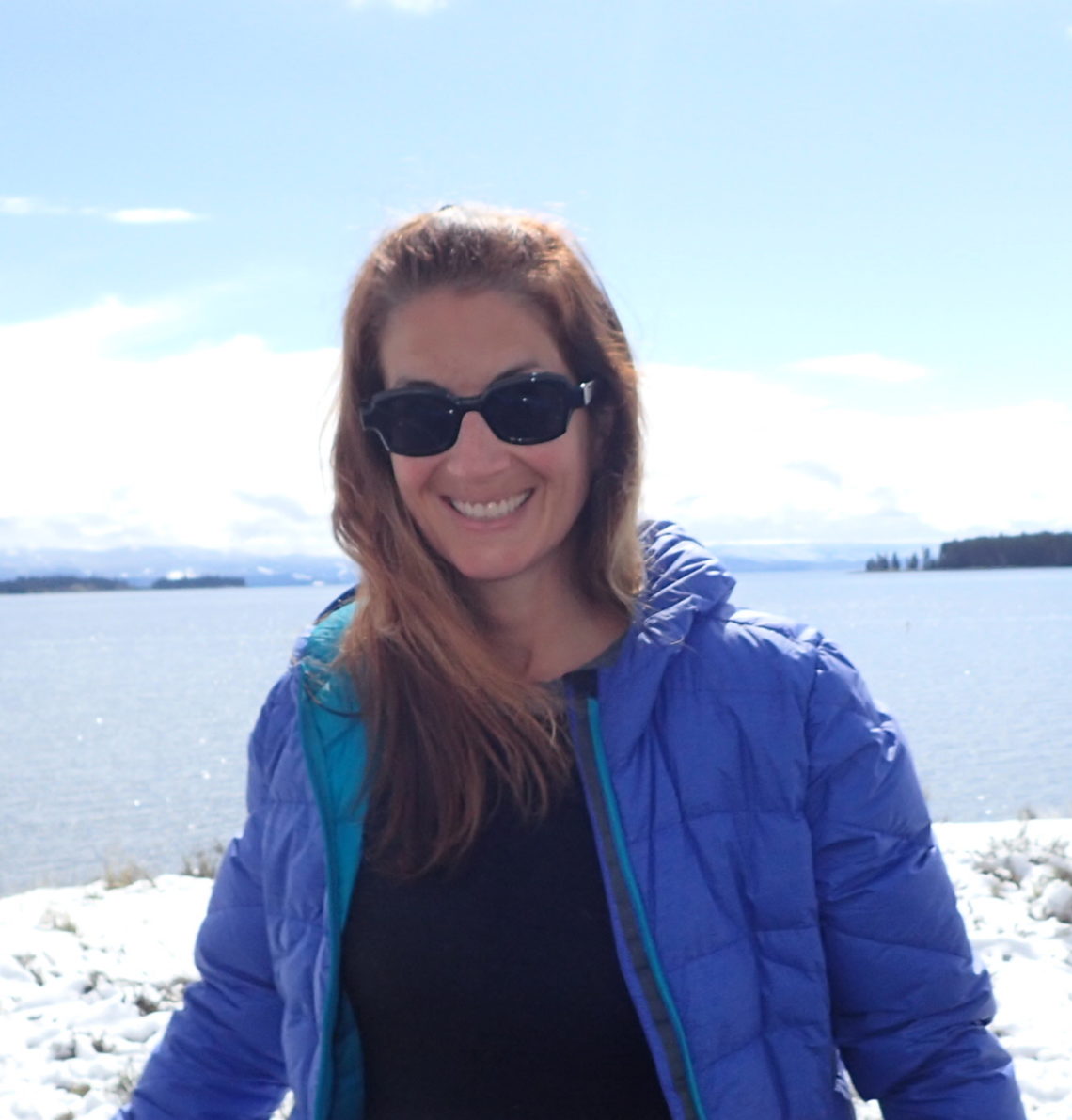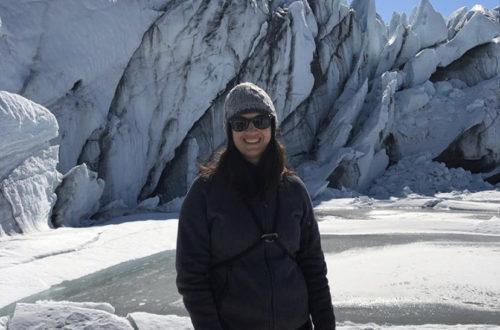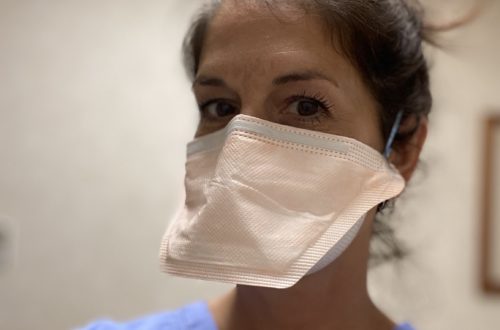
Yellowstone
We wake to bright light pouring in the two large bedroom windows that meet at the corner of the room. I stretch, displacing Abby, who gets up and shakes. I sit up and look out the windows. SNOW! The terrain is covered with an inch of the white coating.
My mood soars. I think, “What an excellent experience! Waking to snow! In Montana! In a gorgeous rustic cabin!” A realization sinks in and my mood sinks too… the Beartooth All American Road. I had planned this trip around a specific day- the average day that Beartooth Pass closes due to snow. I counted backwards to leave Pennsylvania in time to avoid this problem. My calculations were one day off. The Beartooth Highway was closed from the snow.
The Beartooth Highway is a 68 mile stretch from Red Lodge, Montana to its western most terminus at the Northeast entrance to Yellowstone National Park. It has the label ”the most breath-taking drive in the United States.” The Highway begins and ends in Montana, but a large portion passes through the northwest corner of Wyoming.
Visitors have the rare opportunity to explore pristine alpine and montane landscapes, lush forests, and alpine tundra in a small space. The road crosses some of the most extreme country in the world, with 20 peaks reaching over 12,000 feet in elevation. Glaciers are found on the north flank of many of the peaks. The road is the highest elevation highway in the Northern Rockies. The high alpine climate ensures that severe weather conditions occur almost every month of the year. The highway is usually closed October through May, with mid-October seeing the first snowfall.
You can understand my desire to experience the Beartooth Highway. And my devastation at missing it by one day.
Abby and I share Cheerios with almond milk, while sitting on the hearth of the fireplace, and staring out the window at the snow. The sight of the Montana mountains covered in snow lifts my spirits until I have the energy to pack the car.
Blissfully naive, we head towards the next closest entrance, on the eastern side of Yellowstone. I didn’t think to check the Yellowstone website. When it snows, many of the Yellowstone roads also close, including the eastern entrance. We realize this after driving three hours and are about three miles from the entrance. There is a large, wheeled, lighted sign that flashes “Eastern Entrance of Yellowstone Closed, Western and Southern Entrances Open.”
To give you a frame of reference, Yellowstone National Park is larger than the states of Rhode Island and Delaware combined. It is 3,472 square miles or over 2.2 million acres. To circumvent the park to the western entrance, where our accommodations were located, wasn’t a quick drive. Having no other option, I turn the car around and retrace our tire tracks north.
The beauty of this blunder is that our new path took us through Bozeman, Montana. Bozeman is a booming mountain town that hosts Montana State University. Bozeman offers a beautiful downtown with shops, art galleries, theaters, restaurants, and bars, all housed by historic architecture. Downtown Bozeman comes alive with events like Music on Main, monthly Art Walks, and the Bite of Bozeman.
Every year, Bozeman makes dozens of “top” lists from across the country. A summary includes safest, best place to live, best travel destination inspired by Academy Award nominated movies, best destination for a white Christmas, most underrated craft beer city, best college town, most dog-friendly, and best ski town. In 2017, it was voted best-place-to-live-for-Maria-Higgins-if-her-family-was-not-in-Pennsylvania.
Our detour also took us past the famous Gallatin River from A River Runs Through It, the famous fly fishing movie starring Brad Pitt. I find a scenic pull-off and have a dinner of LifeWater and PB and J tortillas on the river bank. Abby wants to absorb the scene more fully and drinks from the river.
The Yellowstone National Park entrance sign is a welcome sight after 11 hours of driving. Yellowstone was originally nicknamed “Wonderland.” Early accounts of Yellowstone’s geysers, hot springs and fumaroles were dismissed as frontier legends. The park sits inside a huge caldera of a volcano. It’s the only caldera in the world that isn’t at the bottom of the ocean. The system is active and contains enough magma to fill the Grand Canyon several times over. The last eruption was 640,000 years ago, but if it erupted today, the volcano would shroud much of the continental United States in ash.
Remarkable ground deformation has been documented in the caldera between Old Faithful and White Lake. Surveys began in 1975 using vertical-motion surveys of benchmarks in the ground. By 1985, the surveys documented unprecedented uplift of the entire caldera by more than three feet. The caldera sunk from 1985 until 2005. Then, the caldera began to rise again.
Inside the caldera’s eastern rim, the total uplift from 2004 to 2010 was 10.6 inches.
On the side of the road, a humongous bison comes up to my car to say hello. He stands about six feet from my car window and is unenthused by my presence. He lazily clops down the pavement. His hair is chocolate brown and resembles dreadlocks. He has short, white horns hidden in the long hair that is on his head, shoulders and forelegs, while short hair is on his flanks and hindquarters. His musty smell is overwhelming, Male bison weigh 2000 pounds, and are the largest land-dwelling mammal in North America. Surprising for their bulkiness, they can run 35 miles per hour and leap over something six feet tall. Wolves and Grizzlies are the bisons only predators. This bison gives me the side eye and rambles on. The dense mass of him causes a heaviness to sit on my lungs and heart.
Yellowstone is the only place in the United States where bison (according to my research, “bison” is the correct term, “buffalo” is slang and incorrect) have continuously roamed since the prehistoric era. The park’s herd dwindled to 23 animals during the late 19th century, when overhunting drove them to the brink of extinction. The population bounced back thanks to more effective stewardship and protection. The 5,500 bison that live in Yellowstone today constitute the nation’s largest and oldest free-range herd.
Grizzlies. The area around Yellowstone boasts one of the largest populations of grizzly bears in the lower 48 states, with an estimated 690 bears roaming the territory. There are only about 1,500 grizzlies in the lower 48 states, most of which are in Montana. Luckily, I saw zero.
I tackle the park in a clockwise fashion. Due to the recent snowstorm, many of the northern and eastern roads are closed. The lower loop is the only route available to me.
At the 11 o’clock position is Norris Geyser Basin, which includes geysers that are much less frequent and less reliable than Old Faithful. The thermal activity here is hotter than other parts of the park, rising as high as 460 degrees Fahrenheit.
Next at two o’clock was the Grand Canyon of Yellowstone. You can access most of the important canyon lookout points by car. It is 1200 feet wide and 4000 feet deep at its most extreme points. An upper and lower waterfall is present, measuring 109 feet and 308 feet high.
Mud Volcano at three o’clock is an area full of sputtering, bubbling mud pits. Unlike the water-driven basins of geysers and hot pools you find in the rest of the park, Mud Volcano is a vapor-driven system. Steam rises from deep underground. The water is ten times more acidic than lemon juice. It is otherworldly to watch the hissing, bubbling, churning water coming from its origins far under the earth’s crust. The vaporous airs reaked with the smell of rotten eggs from the high sulfur content of the gas. The names add to the aura of the area- Dragon’s Mouth Spring, Churning Caldron, Sizzling Basin, Grizzly Fumarole, Sour Lake, Cooking Hillside.
Yellowstone Lake at five o’clock has the bluest water I have ever seen. It is the largest alpine lake in the United States at 136 square miles and the highest at 7733 feet above sea level. The warmest that the water reaches is 55 degrees. The average temperature is 41 degrees. There is a sign that reads “Warning, water is extremely cold. Survival time limited to 20 minutes.” The lake is famous for sudden squalls where waves can reach six feet high.
Overlooking the lake, there is a herd of elk, which are the most abundant animal in Yellowstone. On average, their antlers span just under six feet wide, weigh 30 pounds per pair, with six points. One in the group I watched had 10 points. Their predators are wolves, cougars, bears, and humans.
The park’s main attraction is Old Faithful, the most famous geyser in the world. On my travel clock face, it falls at eight o’clock. This isn’t my favorite part of the park, despite its reputation. It is crowded and overwhelming.
Old Faithful got its name for the regularity of eruption- every 60 minutes. Decades of earthquakes, including one in 1959 that measured 7.5 on the Richter scale, has altered its network of underground fissures and caused it to slow to every 74 minutes. The average height (approximately 145 feet) has remained constant for the last 150 years. The water temperature is 244 degrees and the steam maxes out at 350 degrees. Old Faithful is located in Upper Geyser Basin, which contains more than 20% of all the geysers in the world. 150 of 200 of the geysers in the park are in this area.
It is more lovely to walk the boardwalk after the Old Faithful eruption to view the other geysers and pools, including Morning Glory. Morning Glory is 158 degrees and named for its resemblance to the flower. Rarely, this pool has erupted into a geyser and that would usually follow an earthquake. In the 1800s, explorers used it as a washing machine. They would throw garments in and they would come out clean and warm. Tourists have discarded garbage, including a couch, into Morning Glory. Heat-seeking bacteria create the vibrant colors. Trash blocked the heated water vents, causing the temperature of the pool to drop. Other microorganisms infiltrated the water, causing a dramatic shift in chromaticism. In 1966, the colors were blue and purple, now the center is aqua and the edge is yellow.
Grand Prismatic Spring can be seen from the ground but not easily. The best way to see it is to find the Fairy trail and climb a mile to the overlook point. This view allows the exceptional colors to be seen more completely. It is the largest spring in the United States. The colors seen are the rainbow dispersion of white light. The center is the hottest at 250 degrees, and it cools in the periphery. Different bacteria thrive at different temperatures, and cause the rainbow effect.
The Great Fountain Geyser lives north of Old Faithful, located in the Firehole Lake area of Lower Geyser Basin. Abby and I stop here as the geyser is erupting, which occurs every 10 to 15 hours. The vent is in the middle of the pool with terraced bands of geyserite surrounding it causing concentric reflecting pools. It is the world’s largest (220 feet) predictable geyser.
There are two types of geysers- cone and fountain. Cone geysers erupt from a mound of sinter in steady jets. Fountain geysers, like Great Fountain, erupt from a pool of water in sporadic, intense, but erratically timed bursts. The water explodes in all directions, but with episodes of calm in between. The duration of the Great Fountain is usually about one hour but over two hours have been seen. I feel lucky to see this eruption and say a little “thank you” to the universe.
At the peak of the Rocky Mountains, the Continental Divide is the invisible line that separates drainage basins. If I straddled the line facing south, rain that fell where my left foot was would drain to the Atlantic Ocean. If it fell where my right foot was, it would drain to the Pacific Ocean.
Yellowstone has a diverse range of experiences. This park excels with so many varied options for learning and outdoor activities. This park is famous for a reason. Go.


You May Also Like

Worried
November 25, 2019
In the Driver’s Seat
January 6, 2018
